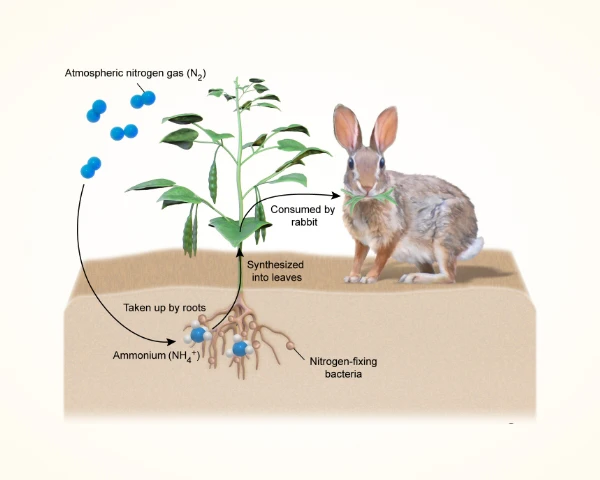AP® Environmental Science Teacher Resources
APES teachers are capable of many things, including their ability to show up for students each and every day with thoroughly planned-out lessons to give them the best learning opportunities possible. To do this, APES educators use the highest quality AP® Environmental Science resources they can find, ensuring rigorous and authentic instruction on a consistent basis. Finding the best resources can take time, and for AP teachers, time is precious. This is why the former AP teachers and Learning Tools for AP Courses authors at UWorld have curated a comprehensive list of high-quality AP Environmental Science teacher websites and resources to support your lessons in the APES classroom.
Free Resources for AP Environmental Science Teachers
Teaching AP Science: Using and Teaching FRQs in Science
- Resource for teaching AP Environmental Science students how to approach and answer free response questions (FRQs).
- Provides strategies and tips for both teachers and students to improve their FRQ performance on the AP Environmental Science exam.
Teaching AP Science: APES Exam and Bloom’s Taxonomy
- Bloom’s Taxonomy resource to help AP Environmental Science teachers improve their exam design and assessment strategies.
- Explains how to use Bloom’s Taxonomy and Depth of Knowledge in designing and assessing AP Environmental Science exam questions.
NASA: Global Climate Change
- NASA resource that provides information on climate change and Earth’s climate system.
- Can be used as a supplement to AP Environmental Science curriculum and as a research tool for student projects and assignments.
Switch: Energy Alliance
- Resource for teaching sustainability and environmental issues.
- Offers lessons, tools, and resources for educators and students to use in their AP Environmental Science studies and projects.
FootprintCalculator.org
- Carbon footprint calculator that allows users to measure their environmental impact.
- Used as a tool for AP Environmental Science students to learn about their own carbon footprint and to explore ways to reduce their impact.
TedEd: Environmental Science
- Environmental science lessons in the form of animated videos and accompanying materials.
- Supplements AP Environmental Science curriculum and provides engaging visual aids for classroom instruction.
Bozeman: AP Environmental Science
- Video series covering AP Environmental Science topics.
- Used as a supplemental resource for classroom instruction to reinforce key concepts and provide visual aids for students.
PhET Interactive Simulations
- Website with interactive simulations for a variety of science topics, including environmental science.
- Used as a hands-on resource for AP Environmental Science students to explore concepts and processes in a visual and interactive way.
hhmi BioInteractive
- Online resource that provides science resources, including environmental science content, for educators and students.
- Acts as a supplemental resource for AP Environmental Science instruction, providing engaging visuals, data sets, and lesson plans.
DataNuggets.org
- Data sets and lesson plans for K-12 science classrooms, including environmental science.
- Acts as a hands-on resource for AP Environmental Science students to engage in scientific inquiry and data analysis.

Other Resources for AP Environmental Science Teachers
The above websites are just a few of the many free AP Environmental Science teacher resources that can be used to supplement lessons. APES teachers can also improve their teaching tools in other ways that are just as useful. The following resources are some of our top picks, but it's important to note that some may require a fee or subscription.
AP Summer Institutes (APSI)
Each summer, the College Board® offers AP professional development through their AP Summer Institutes. During these summer sessions, teachers learn new ways to teach AP classes and go over each section of the course and exam.
AP Online Workshops
For educators who can’t attend in person, the College Board provides online workshops that teach strategies and tools to help AP staff plan and focus their instruction.
Teacher Websites & Communities
There are a variety of social media platforms and websites that provide not only AP Environmental Science teacher resources, but also a sense of community. This list is by no means exhaustive, but we do recommend you check out the following:
- National APES Teachers (Facebook)
- APES Teachers Unleashed (Facebook)
- Classroom 2.0
- Flipped Learning Global Initiative Community
- Teachers Connect
- Teachers Network
- The Current
- The Educator Collaborative
Other Paid Resources & Tools
Tips for Finding Quality APES Teacher Resources
Ensuring the reliability of instructional materials used in APES lesson plans is crucial. Here are some ways to make sure that the resources you use are the best they can be:
- Select resources that are created by experts in your content area, published journals, AP educators, or educational materials companies, as these are more trustworthy than those created by individuals without strong academic backgrounds. UWorld's Learning Tools for AP Courses, for example, are developed by former AP teachers and content area specialists.
- Collaborate with other AP teachers in your district by networking with colleagues during professional development sessions or sharing resources at school.
- Utilize online textbook versions, which are often more current and reliable than their printed counterparts, and offer a wide range of tools and resources.
- Choose resources that offer a variety of teaching methods and formats to cater to the unique needs of your students and facilitate effective instruction.
UWorld's Learning Tools for AP Courses is an innovative program that helps students better understand course concepts that are important for AP success. It is a good resource for teachers who want to improve their AP Environmental Science lesson plans and teaching with a quality resource. Discover how we can help your AP program today.
